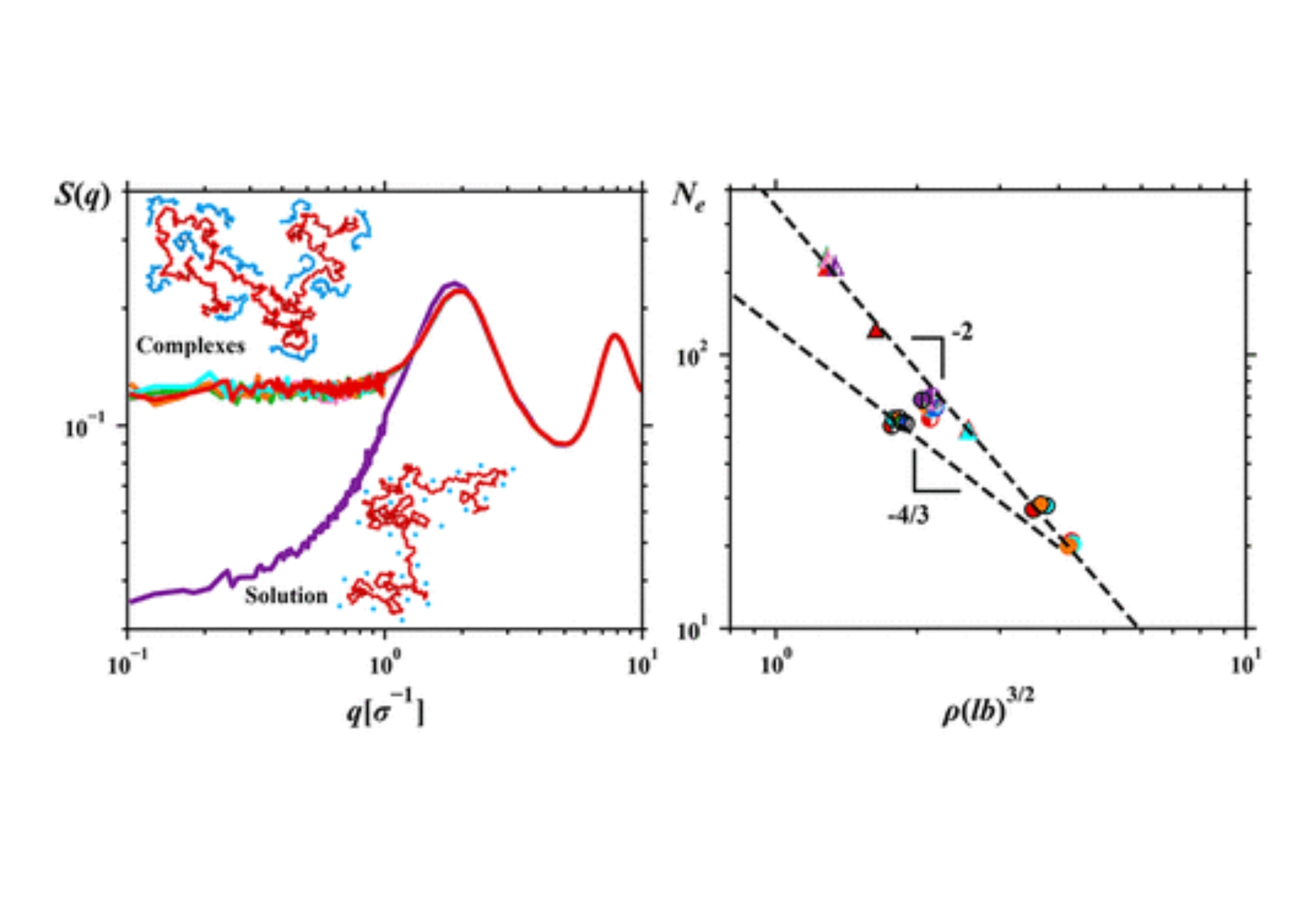Charged Polymers: From Polyelectrolyte Solutions to Polyelectrolyte Complexes
Abstract
Coarse-grained molecular dynamics simulations, random phase approximation (RPA) approach, and scaling analysis are used to study static and dynamic properties of concentrated polyelectrolyte solutions of positively charged chains with the degree of polymerization N+ = 400 and their mixtures with negatively charged chains with degrees of polymerization N– varying between 10 and 400. Simulations show that both the effective chain Kuhn length and mean-square end-to-end distance of a chain decrease with increasing monomer concentration, pointing out screening of the electrostatic interactions by surrounding chains. The structure factor S(q) has a characteristic peak at intermediate wavenumbers q* which location moves toward smaller q values with decreasing monomer concentration. It is demonstrated that the plateau in S(q) at a small q is controlled by system compressibility and increases with increasing degree of polymerization of negatively charged chains. These results are in agreement with S(q) calculated in the framework of the RPA approach considering a solution of neutral chains as a reference system. In the framework of this approach, the location of the maximum in the scattering function at q* scales with monomer concentration as ρ–0.25. Analysis of the chain dynamics in the mixtures of oppositely charged chains shows that chain relaxation is a combination of constraint release and chain reptation processes. Constraint release is demonstrated to be the dominant mechanism in mixtures with negatively charged chains having intermediate degrees of polymerization. The degree of polymerization Ne between entanglements of the tube and super tube for charged systems is found to scale with concentration as Ne ∼ ρ–2 with corresponding packing numbers Pe = 18.45 ± 0.93. This is in contrast with mixtures of neutral chains, where in addition to Ne ∼ ρ–2 scaling, the degree of polymerization between entanglements of the super tube follows scaling Ne ∼ ρ–4/3 with packing number Pe = 6.64 ± 0.19.
Ctiation


